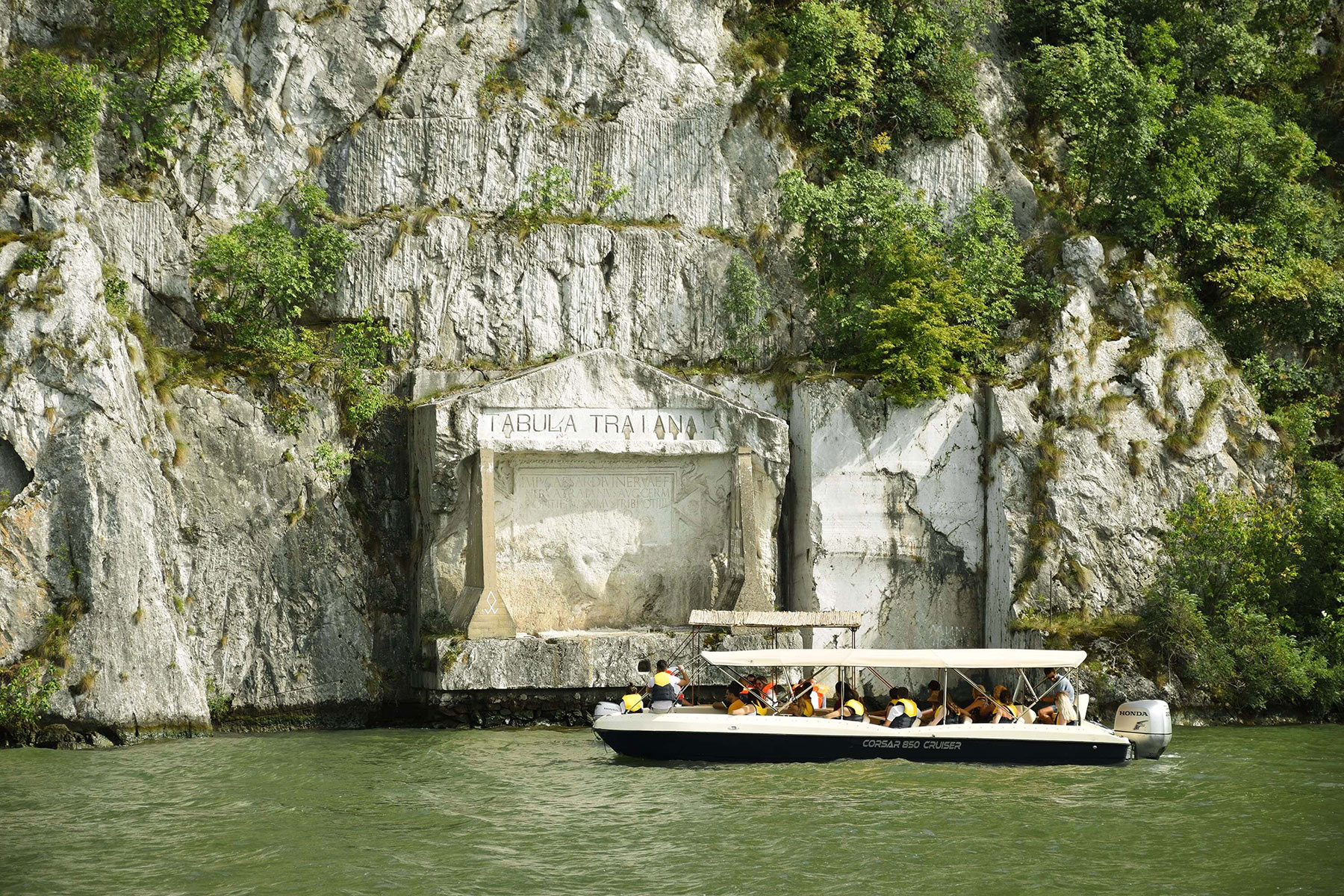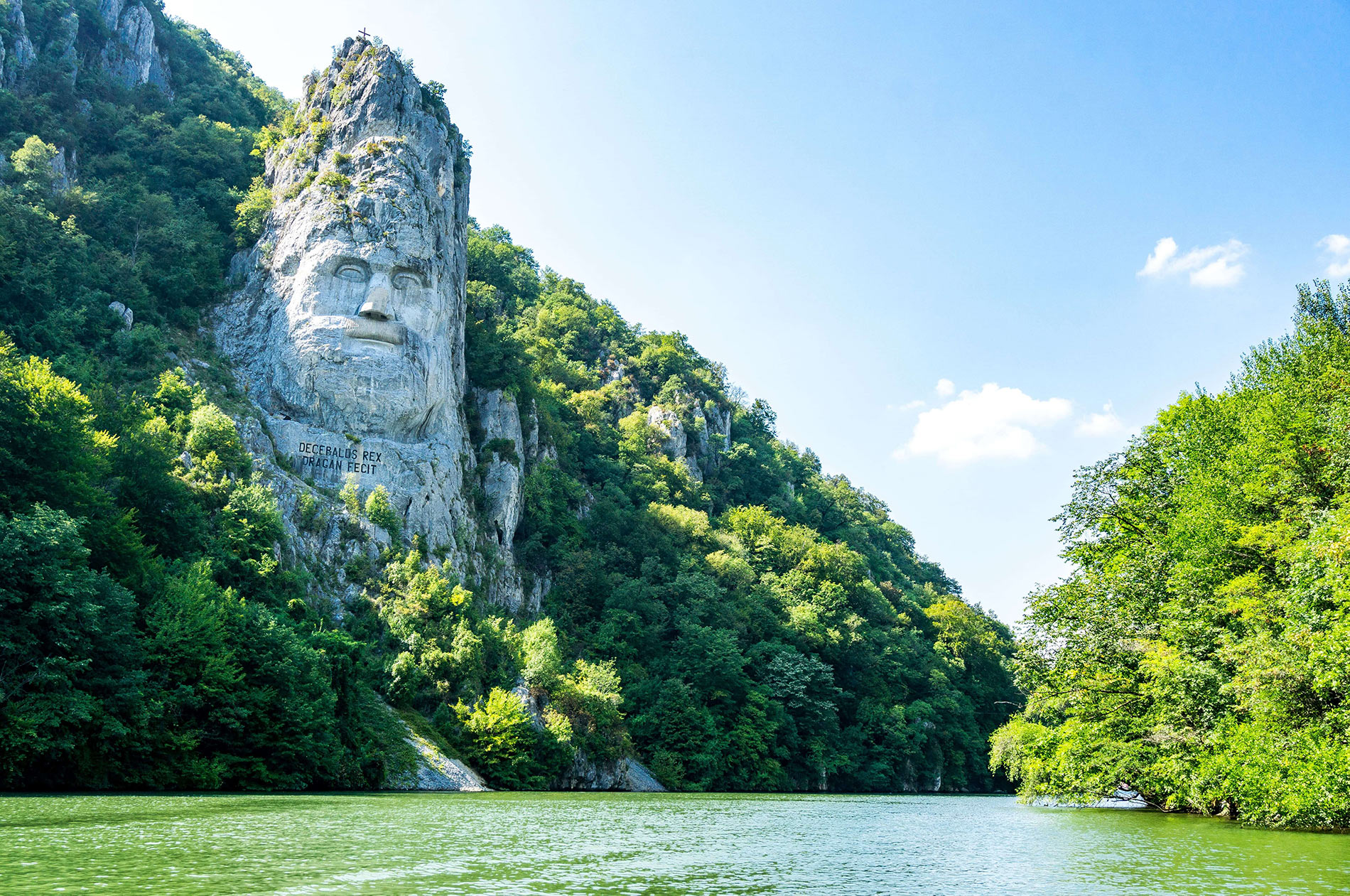Cruising the Djerdap gorge
A natural treasure of Eastern Serbia
A natural treasure of Eastern Serbia
There is always something to see in the largest national park in Serbia! The Djerdap gorge covers an area of 63,786.5 hectares, and most of that territory belongs to the protected zone. It consists of four gorges and three valleys that alternate in this order:
When we talk about the natural beauties of this national park, on a cruise through the Djerdap gorge you will see beautiful sights such as:
What additionally contributes to the sensational view during the passage through the gorge are the peaks of the mountains Miroč – Mali and Veliki Štrbac, the old Balloon stations Pena and Varnica, which once regulated ship traffic, while the level of the Danube was much lower and no dam was built. With their ramps, they signaled to the captains of the ships whether they could safely pass in the narrow and inaccessible parts of the gorge.
There are never enough stories about the natural beauties of this area, but we must not neglect the archeological and historical gems that we can see when we embark on a cruise through the Djerdap gorge. Let’s go further into the past and see where the Danube leads us.

We have already had the opportunity to mention Mount Miroč. Apart from its natural significance, it was also of exceptional strategic importance. Namely, this mountain played an important role in Roman times, when it represented a transport connection with the East, because the main Roman road “Via Danubius” was built over it by order of the Roman emperor Tiberius.
This road led from the fortress of Talija, which was once located near Donji Milanovac, across the Porečka river and the mountain Miroč – then Roman fortress Gerulatis, to the next fortress Eget, which is today’s Bela Palanka. At the foot of Mount Miroč, you can still see the remains of a road protection fortification, such as Gerulatis.
Our waterway takes us further to the site of Lepenski Vir, which we can see from the river. If you decide to visit this museum, a real archeological treat awaits you. Lepenski Vir, discovered in 1965 on the banks of the Danube, is one of the most significant discoveries of this kind on the territory of Serbia, and its culture is estimated to be around 8000 years old.
This culture differs from other prehistoric ones in that people have lived here constantly for more than 2000 years, and from the water you can see three layers in which the remains of seven successive settlements are grouped. Today, 136 trapezoidal houses have been preserved, with fully visible details of the culture of the times, and what also represents the symbol of Lepenski Vir, named after the eponymous vir, are specific sculptures, with prominent eyes, eyebrows, nose and mouth and body patterns.

Next we can see an important historical monument – Trajan’s tablet. It is a historical monument of exceptional importance, it consists of a Latin inscription carved rock above the Djerdap gorge and is dedicated to the Roman emperor Trajan. On his conquest, he built the first Roman road and fortifications, and later the famous Trajan’s Bridge. This special monument is visible only from the river, which is an even bigger reason to crown your visit to Donji Milanovac with such an adventure as a cruise through the Djerdap gorge. We also see historical treasures on the other coast – on the Romanian side we have a monument to Decebal (Decebal Rex), the monastery of Mrakonia and the Ponikova cave.
The monument to the last king of Dacia, Decebalus, is located at the confluence of the Mrakonia and Danube rivers, on the Romanian side of the Djerdap gorge. Its construction lasted for 10 years and as many as 12 stonemasons-alpinists participated in it. It is considered to be the largest carved monument in Europe, and was symbolically carved directly across from Trajan’s Tablet, in order to forever defy this Roman emperor. An interesting fact is that this monument is only 6 meters smaller than the Statue of Liberty.
If you are eager to enjoy nature and the water, but you are interested in a slightly more colorful and active type of vacation, cruising the Danube through the gorge is the right choice. Many foreign and domestic tourists who have experienced this kind of adventure claim that it was a trip to remember and they gladly repeat it.
This unforgettable stay in the outdoors, is ideal for families, romantic couples, friends, teambuilding and everyone who wants to see the beauties of this area. You will never go wrong with a cruise like this!
If you decide to visit the Djerdap gorge, or at least part of its beauties, you will need comfortable accommodation – the hotel “Lepenski Vir” is at your disposal! Book your stay today, via the form above.
Stay up to date with all of our news and offers